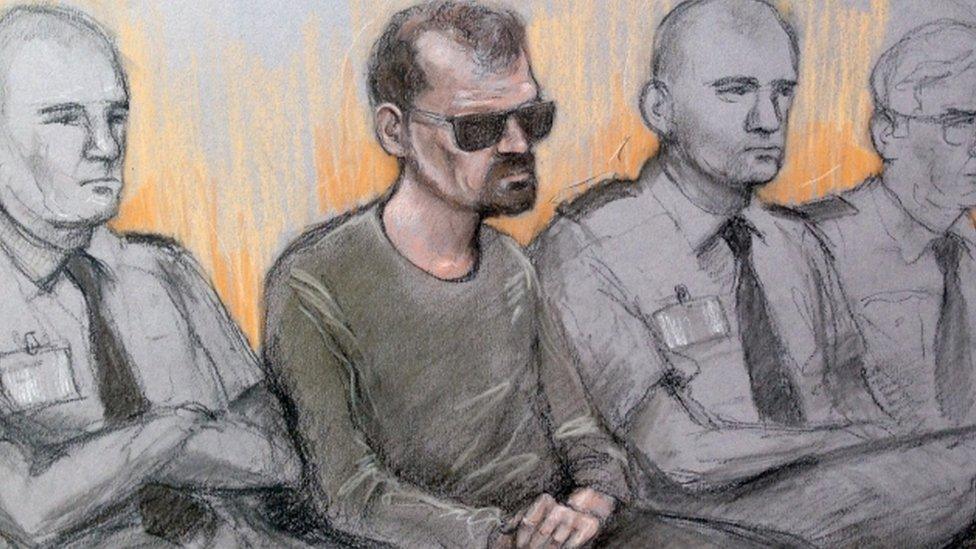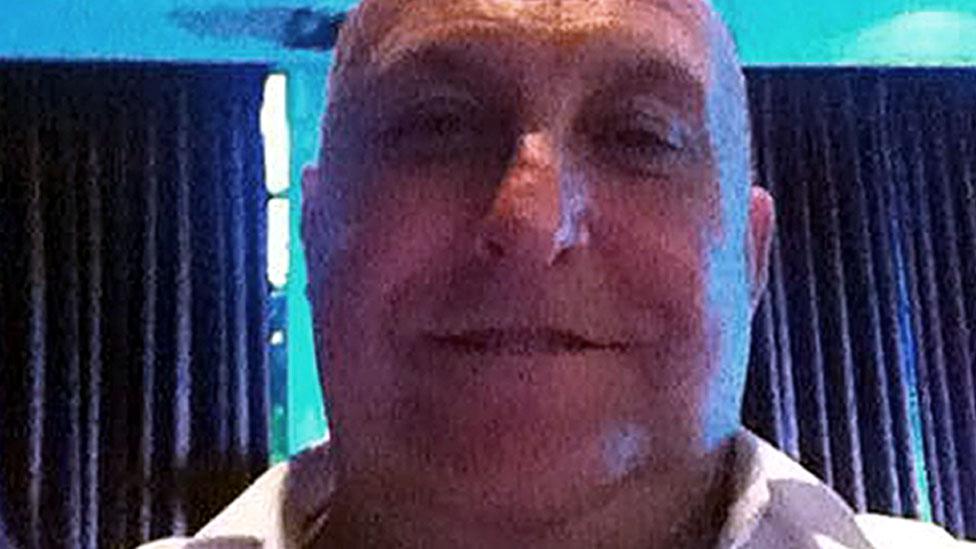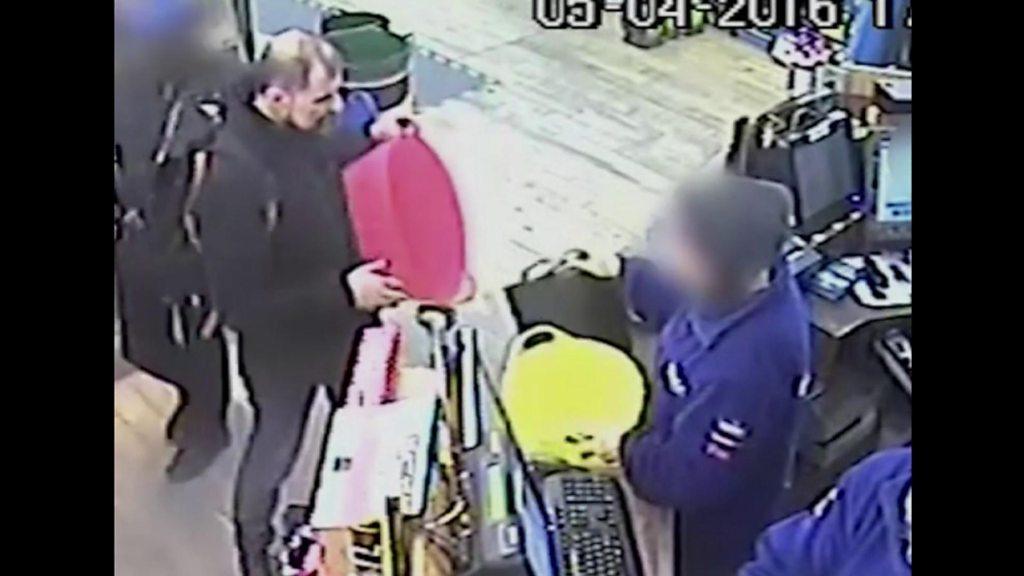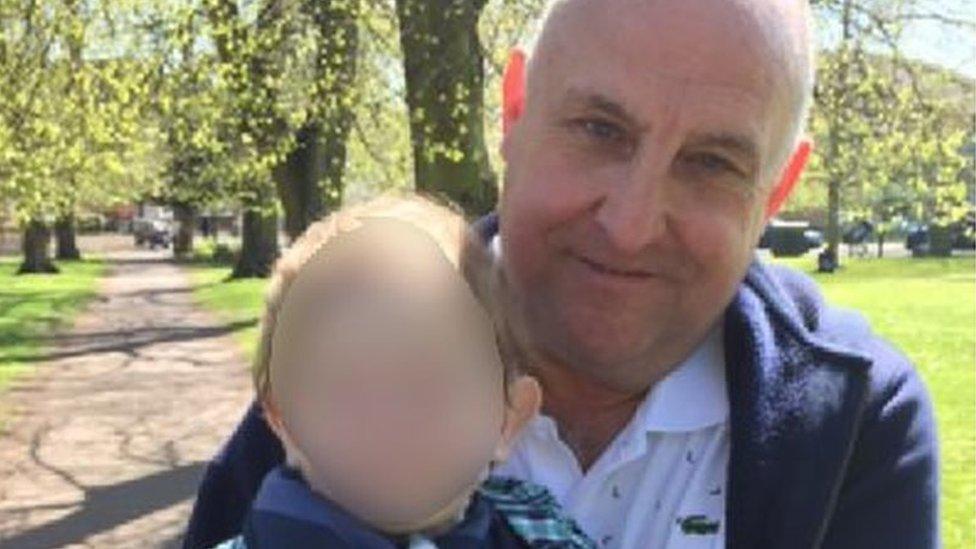PC Gordon Semple death: Pathologist doubts 'sex game strangulation' claim
- Published

Stefano Brizzi denies murder but has admitted disposing of PC Semple's body
A pathologist has cast doubt on a murder accused's claim he "accidentally" strangled a Met Police officer during a "bondage sex game".
Stefano Brizzi, 50, has claimed he arranged to have sex with PC Gordon Semple via the dating app Grindr on 1 April but the officer's neck "snapped" when the leash on a hood slipped.
The defendant denies murder but admits disposing of dismembered remains.
The Old Bailey heard it would have taken minutes for the officer to die.
In a defence statement, Mr Brizzi claimed the pair watched pornography and took crystal meth before a hood was placed over the 59-year-old officer's head at his request.
Mr Brizzi claimed he was asked to tighten a leash around the police officer's neck and whip him.

Gordon Semple had served with the Met Police for 30 years
But the leash momentarily slipped and PC Semple's neck "snapped", the court was told.
Giving evidence, pathologist Dr Benjamin Swift said signs the officer had been strangled were found in a fracture to a tiny horseshoe-shaped bone in his neck as well as bruising.
He added that the PC may have lost consciousness after 10 or 20 seconds of pressure being applied but it would have taken minutes for him to die.
Mr Semple would have suffered fits caused by a lack of oxygen to the brain and "stiffening" of the muscles despite being unconscious, the jury was told.
Dr Swift recorded the officer's death as "unascertained" because he was only presented with several boxes containing various mutilated body parts recovered from Mr Brizzi's flat in Southwark and the banks of the River Thames.
Parts of PC Semple's head, neck and shoulder blade were retrieved but his brain and most of his internal organs were never found, the jury heard.
The court was told one piece of bone had what looked like a possible bite mark, and there was also evidence of "charring" and use of acid.
The trial continues.
- Published25 October 2016

- Published24 October 2016

- Published21 October 2016

- Published21 October 2016

- Published20 October 2016
